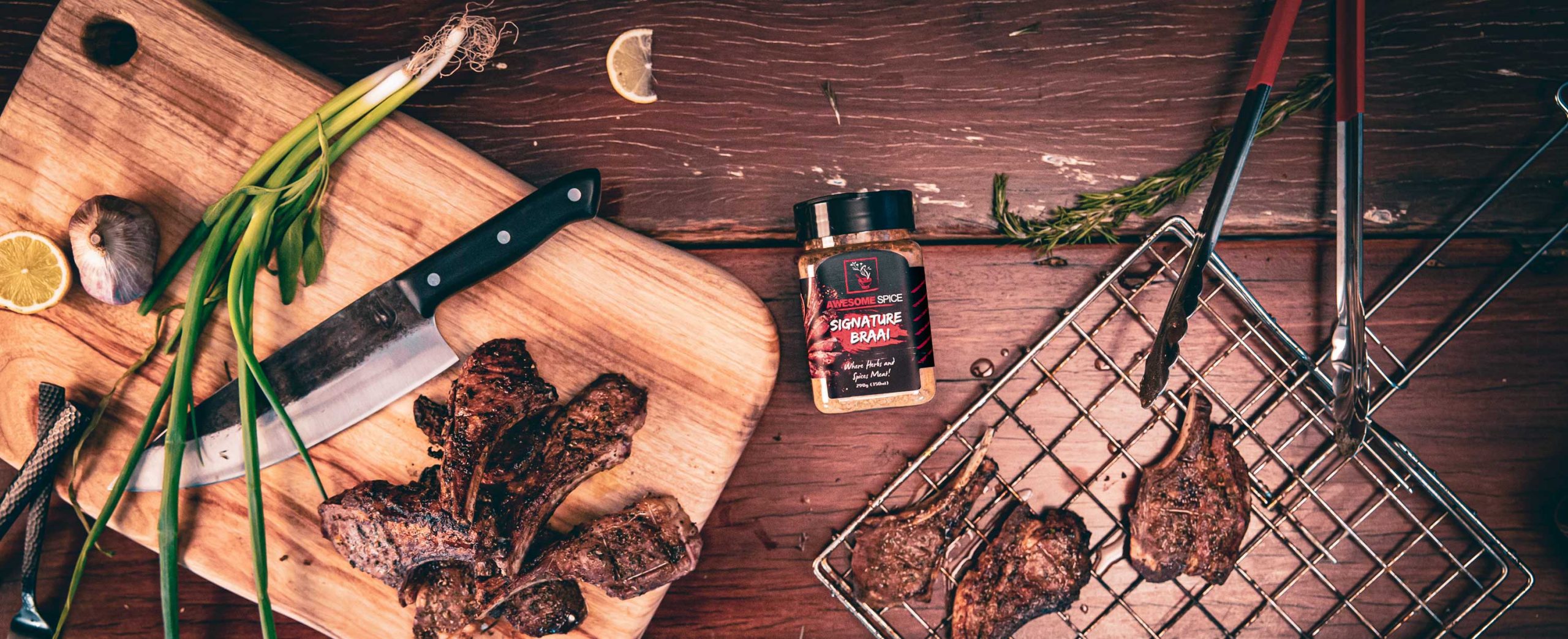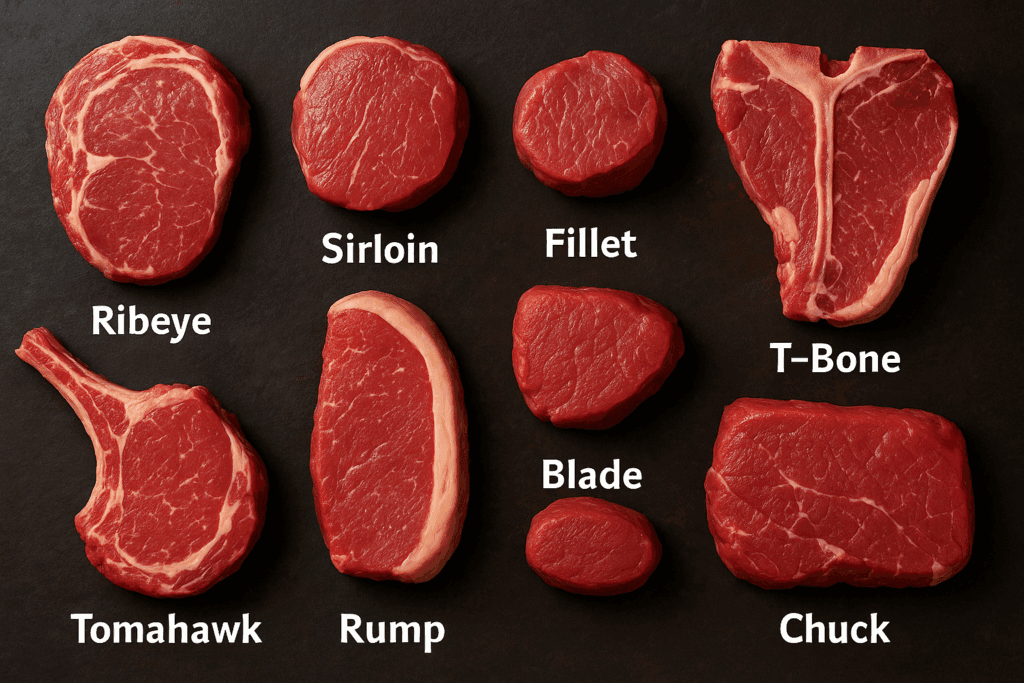Blog, News, Tips and Tricks
How to Braai (or BBQ) the Perfect Aussie Steak – Cuts & Tips
In South Africa, we call it a braai. In Australia, it’s a BBQ. The names differ, but the heart of it is the same — gathering around the fire to cook and connect.
Whether you’re searing on a hardwood-fired braai grid or a stainless steel BBQ plate, understanding your cut of beef is the first step to cooking a steak that’s tender, juicy, and unforgettable.
Choosing Your Cut – Know Your Beef
Every cut comes from a different part of the animal, with its own flavour, texture, and ideal cooking method. Let’s break down the most popular Aussie (and braai-friendly) steaks.
Ribeye / Scotch Fillet
- Where it’s from: The rib section, with heavy marbling. In Australia, the boneless ribeye is called scotch fillet.
- Flavour & texture: Rich, buttery, tender — thanks to the fat marbling that melts during cooking.
- Best cooking method: High-heat sear over coals for a braai, or preheated BBQ grill plates. Keep medium-rare to medium for maximum juiciness.
Sirloin / Porterhouse
- Where it’s from: The back of the animal, just before the rump. Porterhouse usually has the fat cap intact.
- Flavour & texture: Balanced flavour, moderately tender.
- Best cooking method: Great all-rounder for both braai and BBQ. Perfect for those who prefer a slightly leaner steak without losing flavour.
Fillet / Tenderloin
- Where it’s from: Under the backbone, a muscle that does little work.
- Flavour & texture: Incredibly tender, mild flavour.
- Best cooking method: Quick sear to medium-rare. On a braai, use direct high heat and finish quickly. On a BBQ, lid down for even heat.
T-Bone
- Where it’s from: Cross-cut from the short loin — includes both tenderloin and striploin, separated by the T-shaped bone.
- Flavour & texture: Best of both worlds — tenderness of fillet plus flavour of sirloin.
- Best cooking method: Needs strong heat to sear both sides. Works beautifully over braai coals for that charred edge.
Tomahawk
- Where it’s from: A ribeye with the full rib bone left on, often 5–6 cm thick.
- Flavour & texture: Dramatic presentation, ribeye flavour, juicy centre.
- Best cooking method: Reverse sear. Start over indirect heat (lid down on BBQ or high grill on braai), then finish with a hot sear to crust the outside.
Rump
- Where it’s from: The hindquarter, large working muscle.
- Flavour & texture: Bold beefy flavour, firmer bite.
- Best cooking method: High-heat sear, best served medium-rare to keep tenderness. A budget-friendly crowd-pleaser.
Blade Steak
- Where it’s from: Shoulder area.
- Flavour & texture: Rich flavour but contains gristle — when cooked quickly it can be chewy, but slow-grilling or reverse-searing can make it tender.
- Best cooking method: Slice thin for quick braai skewers, or cook low and slow for BBQ sandwiches.
Chuck Steak
- Where it’s from: Neck and shoulder.
- Flavour & texture: Intense beef flavour, lots of connective tissue.
- Best cooking method: Not usually for quick steaks — better for slow braai potjies, BBQ smoking, or shredding after long cooking.
Fuel and Fire – Braai vs BBQ
Your choice of fuel shapes your flavour.
- Braai: Hardwood like ironbark or gidgee for deep smoke and steady heat. Wait until coals are grey-white before cooking.
- Charcoal BBQ: Lump charcoal for clean burn and good heat control.
- Gas BBQ: Preheat for 15+ minutes to achieve that instant sear.
Seasoning Simply
Let the beef shine.
- Classic: Coarse salt, cracked black pepper.
- Braai twist: Peri-peri or dry rub for extra kick.
- BBQ twist: Garlic and rosemary-infused olive oil.
Cooking & Doneness
- Direct heat to sear, indirect to finish — especially for thick cuts like tomahawk or T-bone.
- Flip often for even cooking and juice retention.
- Internal temperatures: Rare 50°C | Medium-Rare 55°C | Medium 60°C | Medium-Well 65°C.
Rest & Serve
Always rest steaks 5+ minutes after cooking, loosely covered in foil.
Serve with sides that speak to your crowd: pap en sous for braai fans, grilled corn or potato salad for BBQ lovers.
Final Word
Whether you’re cooking ribeye over glowing coals or a sirloin on a stainless steel BBQ, the perfect steak is about more than meat. It’s about the people gathered around, the stories told, and the satisfaction of sharing something you’ve cooked to perfection.



